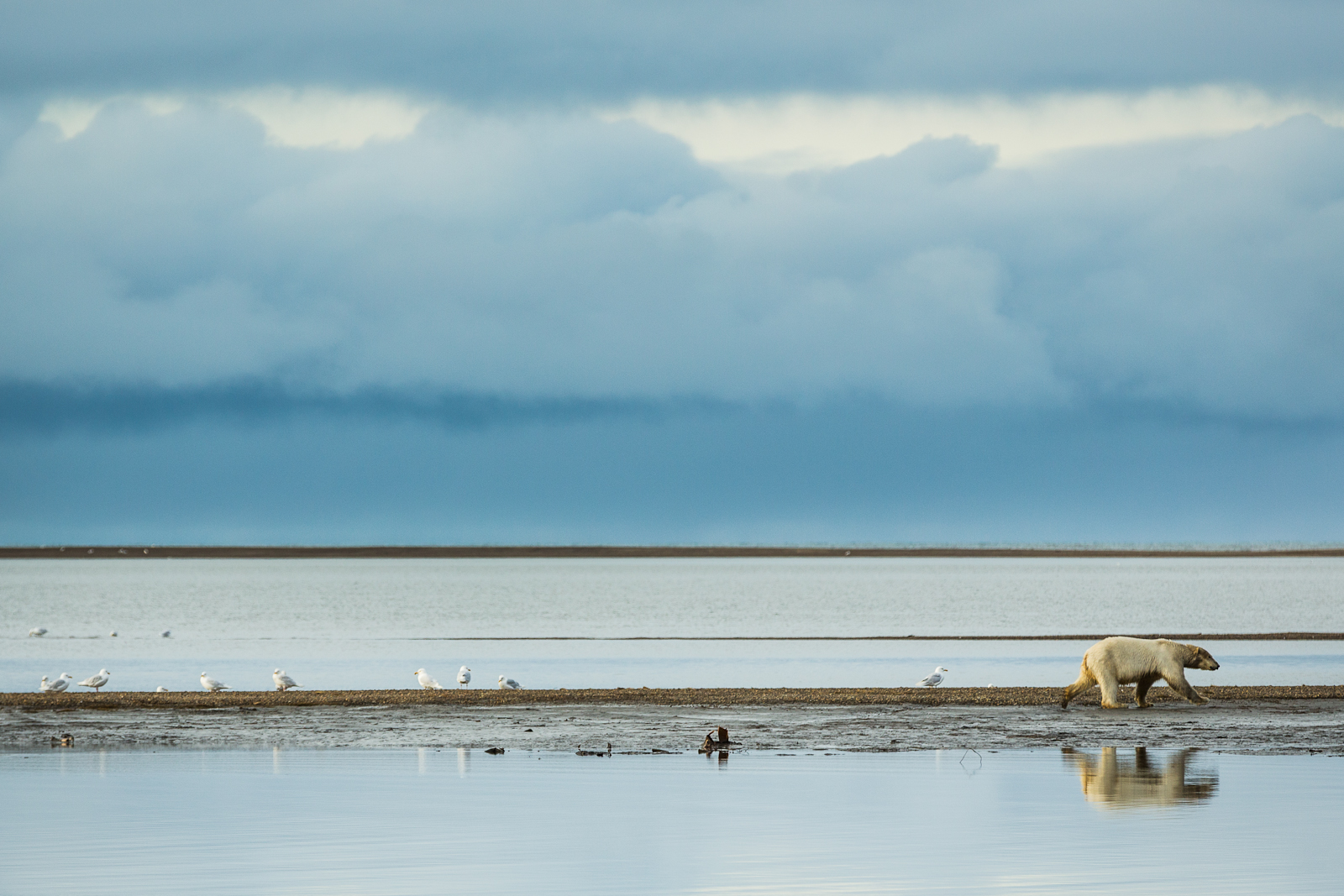Beaufort Sea polar bears are spending more time on land — and becoming more exposed to land-based diseases, scientists find

Polar bears in the Southern Beaufort Sea are spending more time on shore as Arctic sea ice diminishes — and are increasingly exposed to disease pathogens associated with land animals as a result, according to newly published research.
The first documented signs of the polar bears’ exposure came from measures of antibodies in the animals’ blood.
Those antibodies showed exposure to three types of pathogens, as well as signs of growing exposure to two other pathogens that were already known to be present in polar bear population, the U.S. Geological Survey-led study found.
The findings come from blood samples from 139 polar bears tested from 2007 to 2014 and are explained in a scientific paper published in the Nature journal Scientific Reports.
The three pathogens newly documented in the polar bears are Coxiella burnetii, Neospora caninum and Francisella tularensis.
The first of those had been found elsewhere in the Alaska marine system — in fur seals of the Pribilof Islands in the Bering Sea in the early 2000s. It is unclear whether Coxiella burnetii is a primarily land-based or primarily marine-based pathogen, but the discovery that polar bears are being exposed to it suggest that it is a pathogen on the move, said lead author Todd Atwood, a biologists and team leader for the USGS polar bear program.
“We suspect that it could be kind of marching its way northward,” Atwood said. “You know, the Pribilofs are pretty far away from our study area.”
A very surprising discovery, Atwood said, was the high prevalence of exposure to Coxiella burnetii — about a 28 percent rate for the tested polar bears.
The pathogen, common among domestic animals like cattle and goats, is associated with a disease known as Q fever, which can produce flu-like symptoms for people.
The second newly documented pathogen, Neospora caninum, is found in dogs, wolves and other canine animals. The third, Francisella tularensis, is the bacteria that can be spread by ticks and flies and is associated with the disease tularemia, also known as “rabbit fever.”
The two pathogens with exposures that are increasing in Southern Beaufort Sea polar bears are toxoplasma gondii, a parasite previously associated with land animals — and associated with toxoplasmosis, sometimes called “kitty-litter disease” — and Brucella spp, commonly found in domestic animals but also suspected as a possible cause of reproductive problems for Pribilof Island fur seals.
About 24 percent of the tested polar bears had antibodies showing exposure to Toxoplasma gondii, much higher than the 13.2 percent rate that showed up in Southern Beaufort Sea polar bears tested in 2005 and 2006, according to the study.
There is evidence elsewhere that Toxoplasma gondii is spreading in the Arctic from land mammals to the marine environment, the study said. It notes recent findings that seals in Svalbard and Arctic Canada were exposed to the pathogen.
Rates of Brucella exposure are up too, according to the study results. In the 1980s, the rate was 4 percent, which rose to 9 percent in the early 2000s, Atwood said. The new study puts the exposure rate at 13 percent.
Discovery of pathogen antibodies does not mean the polar bears ever became sick, Atwood said. “We’re not saying that the animals were infected,” he said. Rather, the presence of antibodies shows that their bodies responded to exposure, he said.
As summer and fall sea ice extent shrinks, many polar bears around the Arctic have moved to land. That shift is well-documented for the Southern Beaufort Sea population and for the Chukchi Sea populations, which use waters off Alaska. For the Southern Beaufort Sea population, the subject of the pathogen story, land-using polar bears are known to congregate at bowhead whale-bone piles left on shore by local Inupiat hunters. The bears eat meat and fat from those piles.
While it is unclear whether the newly discovered pathogens are recent arrivals in the polar bear population or were present in past years when scientists weren’t looking for them, Atwood said, it logical to expect polar bears spending more time on land to get more exposure to land-based pathogens.
The study calculated risks of bears being exposed to pathogens and found that for Toxoplasma gondii, those animals spending time on land are seven times as likely to be exposed as those that are on the sea ice all year.
For polar bears spending time on land, there is one benefit revealed by the study — lower exposure to chlordane, a chemical pollutant that was used in the past as a pesticide.
Chlordane is among the persistent organic pollutants that are either no longer used or being phased out under an international treaty, the Stockholm Convention. Persistent organic pollutants are of concern in the Arctic because atmospheric and ocean currents carry them north, and they accumulate in the fish and mammals that are important to northern indigenous diets.
That result might show the dietary change for Southern Beaufort Sea polar bears that gather on land. The substitution of bowhead scraps for the bears’ usual prey, ringed seals, could account for lower loads of the contaminant, Atwood said. Fish-eating seals are likely to carry higher loads of chemical contaminants than are plankton-eating bowhead whales, which have diets lower on the food chain, he said.